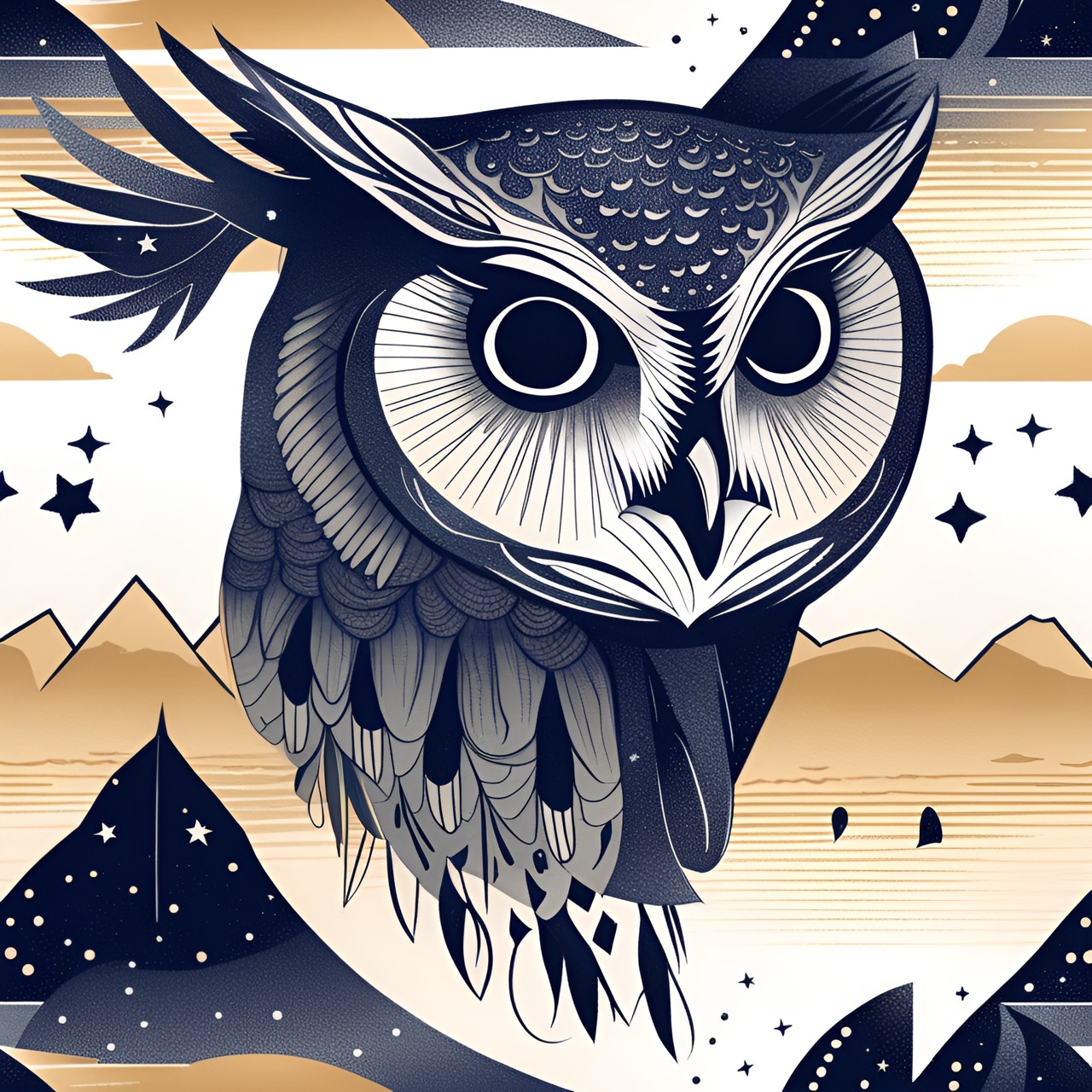Jah Eagle-Owl
These are a small but dreaded nocturnal predator of northern Alkelbulan, stealthy and perceptive.They hunt best in the darkest hours of the night, able to find prey with even the slightest moonlight or starlight. Found within the depths of the Shamsi Desert, few other birds make there home here aside from Kabus Nightjar and Ramil Larks. Jah Eagle-Owls prefer to nest far from human settlements, near dunes and mountains, becoming territorial and squabbling with other birds like the Itri Raven. Some human hunters might target these owls for their feathers and talons or capture them to sell as familiars. Sometimes, they may even be heard in the night, cackling at humans when they've done something particularly clumsy in the dark!
|
Sylthari's Eye
They can also see all celestial bodies even during the day or when the sky is obscured. Finally, they may be able to read fortunes and make prophecies during full moons and under certain constellations but usually only share these with each other or as familiars.
Rithaldis' Form
Eagle owls with Rithaldis's Form can convert parts of their body into a kind of radiant energy (photons, plasma, sunlight, ionizing radiation), usually their beak or talons. Useful against prey without radiant immunity like the Hadu Hedgehog and leaves them immune radiant energy as well, essential for life in the deeper regions of the Shamsi Desert. |
Anatomy |
Jah Eagle-Owls have mottled feathers and big, expressive orange-yellow eyes. Their head, underparts and chests are brown and marked with black and white streaks or blotches, perhaps with some reddish brown mixed in. They have a facial disk like most owls with a dark rim and a black, hooked bill. It is most recognizable for its small, cat like ear tufts and their distinct buo hoot. In their magic form, their beaks and talons are sheer white and their eyes take on a subtle glow, resembling the surface of the moon or containing unique constellations! |
Habitat |
Jah eagle-owls make their home in the Shamsi Desert, Kemet, Kna'an, Parsa, Birit Narim, the Arabiyyan Desert, Balkurtiz and sometimes Gaarreen Ho'aa. Open and arid expanses with rocky outcroppings, wadis, plains and cliffs are their preferred habitat. During the day they rest between rocks, on the ground, in caves or in steep cliffs and precipices. If trees are present they might also roost in their branches. |
Diet |
As nocturnal hunters, the jah eagle-owl become most active after the sun sets. With a hunting range of 1.9 sq mi (5 km2), their prey includes Qafz Jerboa, Sahra Hare, Hadu Hedgehog, Marqat Sandgrouse, Impangele Hen, Isk Viper, Mul'ataa Agama, Khepri Scarab, al-Mawt Scorpion and sometimes even Ayyur Fox.
Perched on some precipitous wadis cliff, rocky outcropping or towering tree, jah-eagle owls scan the desert sands with Sylthari's Eye and listens carefully for any indication of life. Silently they will swoop down on their prey, making almost no sound at all thanks to their specialized feathers--despite their small size they are the dread of many desert species! Their prowess as hunters is admired, especially among the Masriyyin. Especially as their radiant talons and beak tears into their prey--even slaying larger birds of prey! Yet not all those making their home in Shamsi are succeptable to these photon talons. But the natural sharpness of their claws usually does the job, magic or no magic! |
Life Cycle |
Whether because of their lunar magic or their nocturnal habits, the courtship of these owls is tied to the phases of the moon! Jah eagle-owls form lifelong, monogomous pairs so courtship is important. When one of these birds reaches maturity, they read their own destiny in the stars using Sylthari's Eye and compose their own unique song which reflects their fate. In this way, they broadcast their compatibility to their future mate as they sing their song across, vacuous, moonlit sands. They sing this loneful and seemingly simple hu-huhoooh when the moon is full, the subtle tonal patterns lost on human ears. If they hear an ideal partner, they flash their white feathers to signal to approach, drawing closer together until meeting amid a harmonic duet. Even after finding a partner, pairs communicate with each other over long distances by similar means as they prefer to hunt alone. Breeding late into winter, jah owls nest in scrapes within crevices or caves of rocky outcroppings. They produce only two to three eggs, incubated by the female for 31 days. Chicks are fed by both parents, leaving the nest at around 20-35 days but remaining reliant on their parents for several months. Their parents will even guide them as they hunt, most fledglings fully mature in the year following their hatching and sexually mature by two years. A mated pair maintains the same range for years at a time, territorily bickering with Itri Raven which might eat their eggs or hatchlings. |
Myth |
To the Quiris, white or silver owls are associated with Athena (Kanilwyr) but even more so with Luna, Diana and Hecate (different lunal phases of Sylthari). Meanwhile, black and gray owls represent Orcus (Irkath). Regardless of color, all Emynean owls symbolize wisdom and knowledge whether mysterious or acedemic. Some even see them as messengers of these deities.
The Masriyyin have a slightly different view of owls, seen as keen-sighted hunters while also associated with mourning and death. Because of their distinct percipience, depictions of these birds usually face and meet the eyes of the viewer while the body is drawn in profile. Thanks to their skill as a predator, descending on prey swiftly and silently like death itself, they have come to represent death too. In Masriyyin heiroglyphs, jah owls symbolize the letter m, sometimes representing m3 (see) or jm (moan). While the name for a Strix Owl is jmw, the one who laments, j3b is the name for jah eagle-owls. Sometimes their image is invoked in tombs as a force of protection after death, wary and perceptive guardians. |











Comments